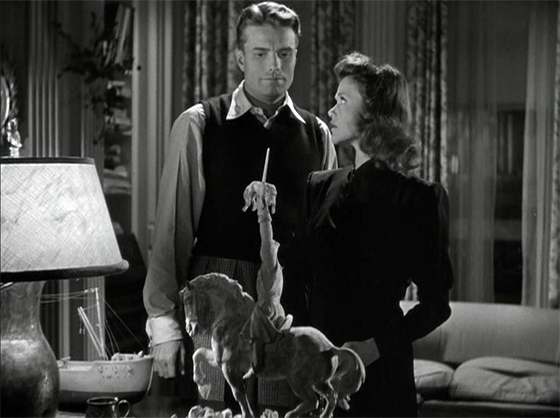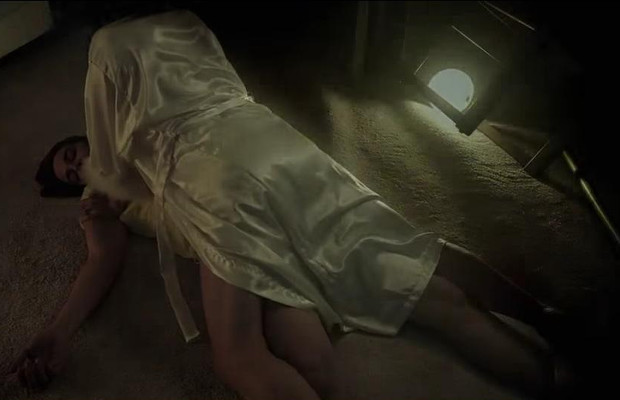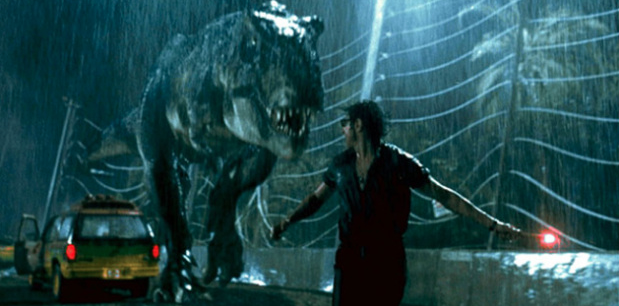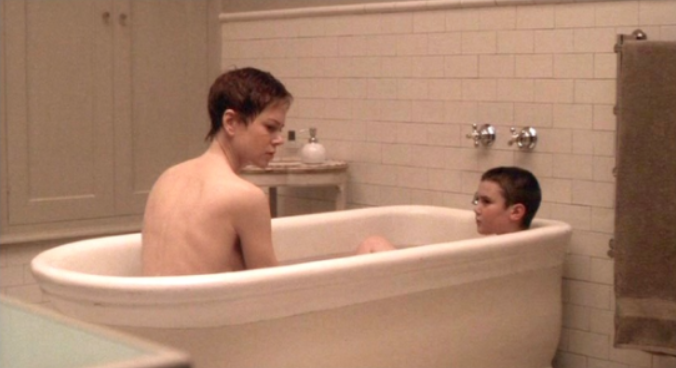Written by Matthew Jones
*Contains some spoilers for The Purge: Election Year (2016), The Witch (2016), and Get Out (2017).
It is not new or revolutionary to connect the political and social realities of our times to films that we produce and consume. There is a longstanding tradition of drawing political theory from film, and producing films with specific political motivations. As far back as the 1920’s, films from the Soviet Union were produced with the sole intention of promoting socialism and national unity. It could be argued that the vast majority of American war films also have a nationalistic message and pro-democracy slant. Setting aside these more overt examples, it is especially prevalent to read underlying political messages in horror films. Contemporary analyses of the genre have led film historians and critics to theorize that trends in horror films often reflect larger trends in politics. For example, the rise of zombie films in Hollywood tends to coincide with the rise of far-right, conservative parties. These are rather broad trends, both simple in nature and readily identifiable by mass audiences. However, there has been a fracture in American politics in recent years that has been both complex and far-reaching. This fracture, which has many moving parts and intricacies to account for, has been more difficult to see in films. It is most evident in the recent and controversial election of Donald Trump, as well as the rise of the Alt-Right movement, and conversely, with the meteoric rise and popularity of Bernie Sanders, an outspoken socialist and progressive politician, along with such movements as Occupy Wall Street. The nation, as a whole, is simultaneously perceived as having strayed far to the left, becoming more secular under the presidency of Barack Obama, and at the very same time more traditional and reactionary, clinging to Christian fundamentalism and racial discrimination. Income inequality, gun violence, gay rights, climate change, abortion, and religious zealotry, among many other issues, have all exacerbated concerns that the country is careening toward some unknown and possibly terrifying end. And Hollywood has tapped into these fears; catering films to niche audiences that see these issues differently and generally hold vastly different political, moral, and religious views (one would not think that the same people who went to see Heaven Is For Real would also be inclined to visit the theater for Nymphomaniac). But filmmakers have pandered to their audience for decades, and there is very little evidence that this practice has become more pronounced in any major way. Nonetheless, the fractures in American society are not lost in the films we watch. While we may not see notable trends in the popularity of certain genres or subgenres, we can see these fractures within the individual narratives, and our own interpretations of those narratives. This is particularly true of horror films, as they are a unique genre, insofar as the primary aim of a horror film is to frighten its audience. If a certain horror film uses elements that the audience does not find frightening, it falls flat, and fails to execute its intended purpose. Therefore, horror films must implement those things that frighten us.
There is always an element of fear entangled in politics, to varying degrees and in a variety of ways. Politicians use fear for their own purposes, often to cast the opposition party or candidate in a negative light. Groups and individuals use fear to incite violence or chaos, and many people fear that the government or corporations are gaining too much power over their lives. This causes some of our most basic fears as human beings, regarding survival and general well being, to be played out at the ballot box. But, more often than not, all of our complex fears and anxieties are channeled into a singular fear of ‘The Other,’ the invisible enemy that (we believe) undermines our values and can, if left to its own devices, ultimately lead to our destruction. For some, it can be the opposing political party, for others, it can be a different religion or skin color or culture. We are always looking for a scapegoat, someone to embody and justify our fears, something to help set ourselves up as good and righteous by comparison. It has always been a trope of the horror genre to establish a dichotomy between two distinct ideologies (Good vs. Evil, Normal vs. Abnormal, Human vs. Inhuman, etc.), and these distinctions allow for horror films to be easily read as political in nature. The horror filmmakers find what scares us, what keeps us awake at night, and then use those fears within narratives containing two polarized elements that are ostensibly apolitical, to then be read as political. Looking at the following films: The Purge: Election Year (2016), The Witch (2016), and Get Out (2017), it is evident that recent horror films showcase the increasing fracture and polarization of American politics, and benefit from national anxieties and paranoia regarding the future of the nation.
Just like its predecessors, The Purge: Election Year centers on a national holiday (of sorts), during which all crimes, including murder, are made legal. This holiday, known simply as the Purge, was created by the ruling party, The New Founding Fathers or NFFA. At the beginning of the film, riots break out all over Washington D.C. in anticipation of the election and in protest of the Purge. Charlie Roan, a senator running against the ruling party’s candidate, sees the Purge as a tool of the rich and powerful to wipe out the poor and disenfranchised. The day before the annual Purge, the NFFA rescinds a rule stating that government officials cannot be killed, paving the way for them to assassinate Roan and remain in power. “Murder Tourists” flood US airports, excitedly entering the country to watch and/or participate in the Purge. As the Purge begins, chaos ensues; various assailants, including a Neo-Nazi squad working on behalf of the NFFA, chase Roan through the city. This game of cat-and-mouse culminates in a ritualistic mass at a cathedral, conducted by Minister Owens, Roan’s opponent in the presidential race.

The second film, The Witch, follows a devoutly Christian family in 17th century New England. After being forced from the local community over a dispute regarding different biblical interpretations, William, Katherine, and their four children move far from the village, and settle near an ominous forest. Soon after the move, Katherine gives birth to Samuel. While playing with his sister, Samuel suddenly disappears. It is revealed to the audience that Samuel was abducted and killed by a witch living in the woods. The family quickly falls to infighting, with much of the blame for his disappearance falling on their eldest daughter, Thomasin. Though the family lacks food and money, and is terrorized by Satanic apparitions and disturbances, they continue to cling to their faith.
In the final and most recent film, Get Out, a young black man, Chris, is apprehensive to meet the parents of his white girlfriend, Rose. As Chris spends more time with her family, he notices that something is amiss. The family’s black servants act very strangely, and Rose’s mother insists on hypnotizing Chris, under the guise of helping him quit smoking. When Chris tries to escape the family, Rose admits her role in deceiving him, revealing that Rose’s parents habitually abduct black people, hypnotize them, and transplant the consciousness of older white people into their bodies. The victims are forced to live in a subdued state, at the mercy of the controlling white consciousness. Rose’s father claims that they choose black people because they are “the in fad.”
All three films operate as horror films (Get Out is the only one considered a ‘horror-comedy’), with the horror stemming from various sources. In The Purge, the horror comes from the unrestrained violence that society (within the film) allows. Anybody can commit any heinous act they desire during the Purge without consequences. In The Witch, the horror stems from religious anxieties, both in regard to the unknown consequences of sin, as well as the fear of religious persecution. And finally, in Get Out, the fear of racial discrimination, as well as the fear of becoming a slave, create the horror. In all three films, horror also stems from more simplistic and biological fears, those things that we find horrifying at a basic, physical level. In The Purge, the maniacs and NFFA are unsettling and merciless, violent and able to cause harm without remorse. In The Witch, the evil lurking outside the woods is both violent and gruesome to look at, with the witches portrayed as old, grotesque women. And in Get Out, the white attackers seem completely cold to the plight of the black characters, and the black characters under hypnosis are akin to helpless zombies, unable to escape their tortured existence. But there is one element of horror that is present in all three films and underlies each narrative, and that is paranoia. In The Witch and Get Out, the paranoia is more overt, and a centerpiece of the film’s story; in one, it is the paranoia regarding white people and fear of being tricked or brainwashed into submission, and in the other, paranoia within a family and fear of God’s wrath. Lastly, in The Purge, paranoia is an essential part of what makes the premise so frightening. Every citizen is susceptible to being violently murdered or tortured at any moment, and not only is it legal, but the government actually encourages and facilitates the slaughter.
It is this paranoia that displays the underlying fracture in American politics. The fear of “the Other,” the fear of unchecked violence, the fear of religious or racial persecution, the fear of unchecked governmental power; no matter the political affiliation, any viewer can read these films as speaking to their innermost fears, and by extension, our larger societal anxieties. This can be further analyzed by the seemingly contradictory and disparate reviews and interpretations of these films. Adam Holtz of Plugged In writes that the narrative in The Witch focuses so much on “wickedness” with “no godly counter and certainly no happy ending.” (Holtz), while Simon Abrams classifies the film as a “feminist narrative” that “feels more like a sermon.” He continues by stating unequivocally that the film is “about women, and the patriarchal stresses that lead to their disenfranchisement” (Abrams). The first review, which is primarily concerned with how ‘family friendly’ the film is, laments The Witch’s lack of hopeful optimism and clear-cut Christian reinforcement, while the second one reads the film as a sermon on the crushing nature of patriarchy and religious fundamentalism in colonial America.

In John Semley’s scathing review of The Purge, he painted the film as having contradictory motives. He wrote that the The Purge “delights in images of excessive, cartoonish, aestheticized violence…[but] at the same time, its ostensible message is that excessive, cartoonish, aestheticized violence is bad and wrong and that we should feel bad about indulging it” (Semley et al). However, Andrew O’hehir, while not finding the film entirely worthy of praise, did see it as a glimmer of hope and a source of escapism from our bleak reality. He wrote that The Purge is “a mind-numbingly obvious political allegory,” but at the same time provides “a more idealistic vision of democracy than any currently available in the so-called real world of Trump and Brexit and post-partisan meltdown.” He believed that the story emphasized “sacrifice and heroism, a story of redemption and renewal and cross-racial working-class solidarity” and showed “the American people finally reclaiming their destiny from the tiny clique of gated-community wealthocrats who run everything” (O’hehir).
In Joe Jarvis’ review of Get Out, he described the narrative as “a vehicle for a racial agenda.” He elaborated, arguing that the film aimed to convince African-American viewers that they “cannot trust white people,” but that the police, and by extension the entire government, should be trusted as they “are only there to help, even when it seems intrusive” (Jarvis). While the reviewer praised the film’s artistry and entertainment value, he saw the subversive message as being ultimately detrimental to African-American viewers and their perception of white Americans. Armond White of the National Review had an even more negative take on the film, decrying it as a “state-of-the-divided nation movie.” He wrote that the director, Jordan Peele, “exploits racial discomfort, irresponsibly playing racial grief and racist relief off against each other, subjecting imagination and identification to political sway.” In this review, the film is simply opportunistic; a well timed attempt to allow white liberals to relish in their recognition of current racial injustices, while feeding off of and fueling African-American fears and paranoia (White). However, in Walker MacMurdo’s glowing review of the film, he wrote that the filmmaker intends to comment on the “quotidian horror of life in black America: You can make all of the right decisions, and still find yourself in mortal danger by being in the wrong place at the wrong time” (MacMurdo).
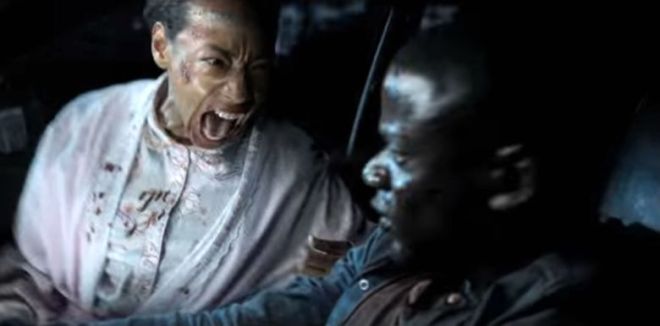
It must be said that just about every film of every genre has contradictory reviews. Even Get Out, which was (almost) universally praised by critics, had its detractors. But in these reviews, it is not necessarily the reviewer’s perception of the overall quality of the film that truly matters. It is how they go about analyzing and politicizing the films, and what this says about the state of the cinema and the nation, both in regard to filmmaking and film viewership. Was The Witch a secular attack on Christian values or an overly religious rumination on feminism and the evils of patriarchy? Did The Purge force audiences to face the issue of gun violence in America, or did it provide a much-needed escape from the horrors of reality? Was Get Out anti-white propaganda, or biting satire, commenting on the plight of African-Americans? Depending on your perspective, any of these analyses could be true. The point is that all three films gain from our collective paranoia and the fractured political sphere that we now exist in. No matter if you are rich or poor, christian or atheist, conservative or liberal, white or black, these films aim to get under your skin, to pry at your anxieties. And it is not just limited to these three. The current trend in horror is the acquisition of hyper-politicized themes and narratives to draw in audiences and breathe life into our pre-existing unease. This is also evident in The Invitation (2015), Green Room (2015), Don’t Breathe (2016), and 10 Cloverfield Lane (2016), among others.
While paranoia and political undertones are nothing new in horror films, there has been a recent escalation in films that play on the ever-widening gap that exists in American politics. Whether it is use of a gang of Neo-Nazis, a demagogue with absolute power, seemingly normal white people with sinister, racially-motivated intentions, or even Satan himself, nothing is more effective in horror than seeing our innermost fears played out on screen. These films operate as dark caricatures of our reality, energizing our increasingly biased and one-sided view of the world. With the introduction of ‘alternative facts’ into our collective vocabulary and increasing distrust of our media and institutions, paranoia has quickly become a defining characteristic of American society, thus solidifying the success of these kinds of films. And once fear and paranoia take hold, we look to these horror films, either to escape reality, or to try to answer the question: What can we do?
Abrams, Simon. “The Witch Movie Review & Film Summary (2016) | Roger Ebert.”RogerEbert.com. Ebert Digital LLC, 18 Feb. 2016. Web. 20 Mar. 2017.<http://www.rogerebert.com/reviews/the-witch-2016>.
Holz, Adam. “The Witch | Movie Review.” Plugged In. Focus on the Family, 16 May. Web. 25 Mar. 2017. <http://www.pluggedin.com/movie-reviews/the-witch-2016/>.
Jarvis, Joe. “How The Movie “Get Out” Is a Genius Piece of Racial Propaganda.” The Daily Bell. Blacksmith Pte. Ltd., 6 Mar. 2017. Web. 23 Mar. 2017.<http://www.thedailybell.com/news-analysis/how-the-movie-get-out-is-a-genius-piece-of-racial-propaganda/>.
Macmurdo, Walker. “Get Out Is As Good As Everyone Says It Is.” Willamette Week.Williamette Week, 28 Feb. 2017. Web. 20 Mar. 2017. <http://www.wweek.com/arts/movies/2017/02/28/get-out-is-as-good-as-everyone-says-it-is/>.
O’Hehir, Andrew. “Which Is Stupider: “The Purge: Election Year” or the Total Insanity of the Real World?” Salon. Salon Media Group, Inc., 3 July 2016. Web. 21 Mar. 2017.<http://www.salon.com/2016/07/02/which_is_stupider_the_purge_election_year_or_the_total_insanity_of_the_real_world/>.
Semley, John, and James DeMonaco. “Latest Film in Purge Franchise Achieves Apex of Idiocy.” The Globe and Mail. Special to The Globe and Mail, 12 July 2016. Web. 17 Mar. 2017. <http://www.theglobeandmail.com/arts/film/film-reviews/latest-film-in-purge-franchise-achieves-apex-of-idiocy/article30713076/>.
White, Armond. “Return of the Get-Whitey Movie.” National Review. National Review, 24 Feb. 2017. Web. 10 Mar. 2017. <http://www.nationalreview.com/article/445206/jordan-peeles-get-out-trite-get-whitey-movie>.


